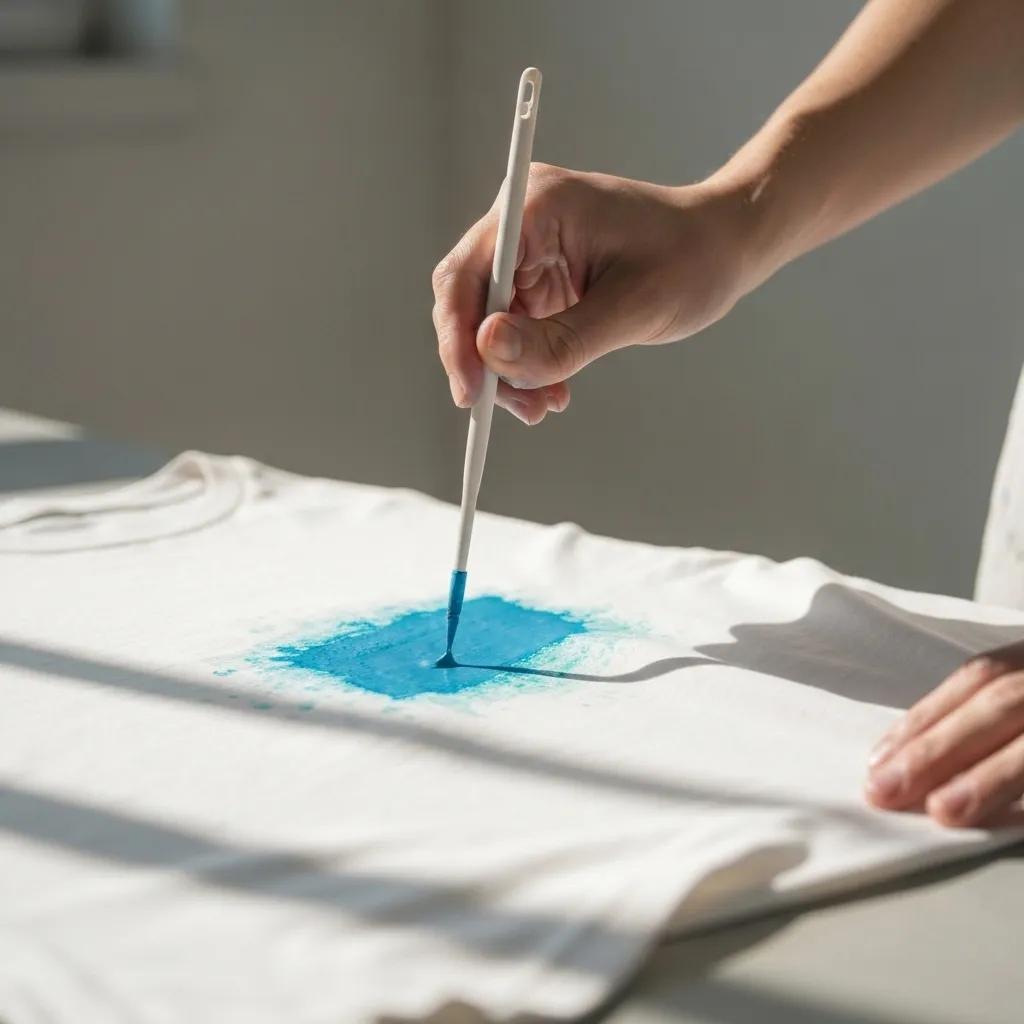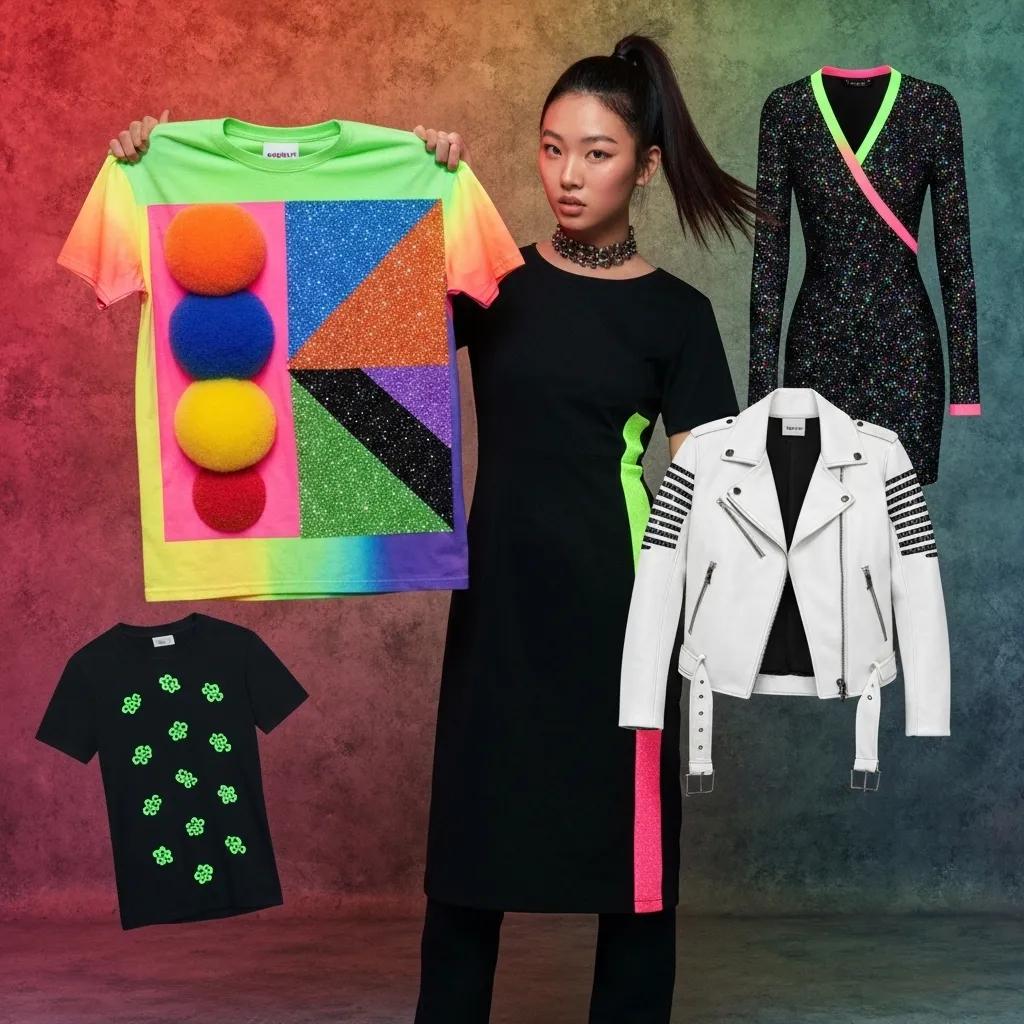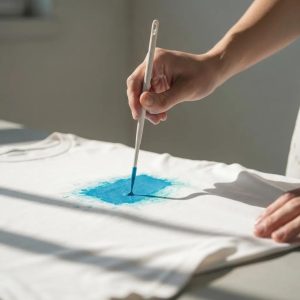Choosing the Best Screen Printing Inks for Custom Apparel
Screen printing ink types determine the look, feel, and longevity of custom apparel by influencing opacity, hand feel, and environmental impact. Local businesses often struggle to pick the right ink for their brand’s style and durability needs. This guide clarifies the main ink categories—Plastisol, Water-Based, Discharge, and Specialty inks—explains how to match ink to fabric, outlines curing essentials, examines eco-friendly considerations, and weighs each ink’s pros and cons. Along the way, Arizona Screen Printer’s expertise in custom screen printing for local Arizona businesses highlights practical tips for achieving vibrant, durable prints that support both brand image and customer comfort.
What Are the Main Types of Screen Printing Ink?
Screen printing ink types fall into three core categories that serve different printing goals, fabric compatibilities, and aesthetic effects. Understanding these foundational options helps businesses select an ink that balances vibrancy, softness, and durability for their custom apparel projects.
What Is Plastisol Ink and What Are Its Key Characteristics?
Plastisolink is a PVC-based formula known for its high opacity and vibrant color payoff, making it ideal for bold graphics on dark garments. Its mechanism involves depositing a plastic layer on the fabric surface that cures into a durable film, ensuring prints resist cracking and fading. For example, sports jerseys printed with vivid team logos often use Plastisol to maintain bright hues through repeated washes.
- Water resistance: Forms a film that repels moisture and retains color.
- Versatile mesh range: Works with 110–305 mesh for fine detail or thick coverage.
- Ease of use: Does not dry on the screen, simplifying large runs.
Plastisol’s performance on polyester blends and its forgiving application process set the stage for exploring softer, more breathable alternatives.
How Does Water-Based Ink Differ in Composition and Feel?

Water-based ink uses water as the carrier for pigment particles, allowing it to penetrate fibers and produce a soft hand feel. Unlike Plastisol’s surface film, water-based inks absorb into cotton and natural fibers, resulting in breathable prints that feel part of the garment. For instance, fashion tees with subtle pastel graphics often use water-based formulas to enhance comfort in warm climates.
- Soft hand feel enhances wearer comfort.
- Breathability prevents stiff patches on lightweight fabrics.
- Lower film thickness yields matte finishes favored for vintage styles.
These characteristics position water-based inks as the eco-conscious choice for fashion-forward brands seeking both sustainability and customer comfort.
What Makes Discharge Ink Unique for Screen Printing?
Dischargeink removes the shirt’s dye and replaces it with pigment, creating a vivid, “vintage” print that sits below the fabric surface for an exceptionally soft feel. This method works by chemically stripping the existing dye and bonding new color molecules within the fibers. A classic example is a dark cotton shirt converted into a retro-style logo that feels as soft as a garment dyed in that hue.
| Ink Type | Mechanism | Primary Benefit |
|---|---|---|
| Discharge | Removes dye, replaces color | Ultra-soft hand feel |
| Water-Based | Pigment disperses into fibers | Breathability and softness |
| Plastisol | Forms film on surface | High opacity and durability |
Dischargeink’s unique bonding mechanism makes it a top pick for 100% cotton shirts requiring a soft, vintage aesthetic without sacrificing color brightness.
Which Specialty Inks Are Available and What Effects Do They Create?

Specialty inks expand design possibilities by adding texture, sparkle, or novelty effects that engage customers and elevate brand differentiation. Brands can choose from:
- Puff Ink, which expands when heated to create raised, three-dimensional effects.
- Glitter Ink, embedding fine metallic particles for eye-catching sparkle.
- Metallic Ink, imparting sheen reminiscent of foil prints.
- Glow-in-the-Dark Ink, charging under light to emit luminescence in low light.
Specialty inks enrich brand storytelling through visual and tactile cues that standard inks cannot provide. Integrating unique textures encourages customer interaction and can justify premium pricing.
How Do Ink Properties Like Opacity, Durability, and Hand Feel Compare?
Comparing core attributes clarifies trade-offs among ink types and helps align choices with project requirements.
| Ink Type | Opacity | Durability | Hand Feel |
|---|---|---|---|
| Plastisol | High | Excellent | Slightly plasticky |
| Water-Based | Medium–Low | Good | Very soft |
| Discharge | High | Good | Ultra-soft |
| Specialty | Varies | Variable | Texture-specific |
This comparison reveals how opacity and hand feel inversely correlate: higher film thickness boosts color vibrancy but reduces softness, guiding businesses to balance visual impact with wearer comfort.
How Do You Choose the Best Screen Printing Ink for Your Project?
Selecting the optimal ink involves assessing fabric type, desired durability, hand feel, budget, and local business priorities. A structured decision process ensures prints meet both aesthetic and functional goals.
What Ink Types Are Best for Different Fabric Types and Garments?
Ink compatibility depends on fiber content and garment purpose. Natural fibers like 100% cotton excel with water-based and discharge inks for softness, while synthetic blends favor Plastisol for adhesion and vibrant coverage. Athletic wear made from polyester blends typically uses silicone-based or specially formulated inks for moisture-resistance and stretch.
- Cotton: Water-based or discharge for soft vintage looks.
- Cotton/Polyester blends: Plastisol for color pop and wash resistance.
- 100% Polyester: Special polyester inks to prevent dye migration.
Matching ink to fabric maximizes print quality and wearer satisfaction across applications from retail fashion to team uniforms.
How Does Ink Selection Impact Print Durability and Vibrancy?
Ink formulation directly influences washfastness and color retention. Plastisol’s polymer film resists abrasion and UV exposure, extending print life on workwear and outdoor merchandise. Water-based prints may fade more rapidly on dark garments but excel for soft, breathable fashion items in low-abrasion settings. Discharge inks lock pigment into fibers for vibrant, long-lasting graphics when used correctly.
Proper ink choice elevates brand reputation by delivering consistent quality through multiple wear-and-wash cycles, reducing reorders and customer complaints.
Which Inks Offer the Softest Hand Feel for Fashion Apparel?
Discharge and water-based inks lead in softness because they integrate within fabric fibers rather than forming external layers. Brands seeking a luxury or worn-in feel choose discharge for white-on-dark prints and water-based for subtle, pastel designs on light tees. Soft-hand prints encourage repeat wear and positive customer feedback for comfort-focused businesses.
How Do Cost and Production Factors Influence Ink Choice?
Budget and run size shape ink decisions: Plastisol’s forgiving processing reduces setup waste and downtime, lowering per-unit costs in large runs. Water-based and discharge inks often require precise mesh counts, longer cleanup, and specialized curing, raising labor costs for short runs. Specialty inks add material expense but can justify higher price points for premium projects.
Balancing material and labor costs ensures profitable production while meeting brand quality standards.
What Are the Best Ink Options for Local Businesses in Arizona?
Local climate and brand goals influence ideal choices. Arizona’s heat and frequent outdoor events benefit from durable Plastisol for team uniforms and promotional apparel. Fashion boutiques serving eco-conscious consumers can highlight water-based prints for soft hand feel and reduced chemical content. For custom giveaways at festivals, specialty inks like metallic or glitter create engaging, high-impact designs that stand out under bright sun.
Aligning ink selection with local environmental conditions and customer preferences reinforces brand relevance and print longevity.
What Is the Screen Printing Ink Curing Process and Why Does It Matter?
Curing transforms wet ink into a stable film or fiber-bonded pigment, ensuring prints resist washing, abrasion, and fading. Proper curing unlocks an ink’s full performance potential by completing polymerization or water evaporation.
How Are Plastisol Inks Cured and What Temperatures Are Required?
Plastisol inks cure by melting PVC particles and crosslinking with plasticizers at 320–330°F (160–165°C). This temperature range ensures polymer chains fuse into a durable film. Under-curing yields prints that crack or wash off, while over-curing can scorch fabric or yellow whites.
The Chemistry of Screen Printing Inks - in English
Plastisol inks, a common type of screen printingink, are known for their durability and vibrant color, which is achieved by forming a film on the fabric’s surface. These inks are composed of PVC particles and plasticizers that require specific curing temperatures to ensure proper bonding and longevity of the print.
Smith, A., “Screen PrintingInks: A Comprehensive Guide,” Journal of Printing Technology,
What Are the Curing Requirements for Water-Based and Discharge Inks?
Water-based inks typically require 280–300°F (140–150°C) to evaporate water and activate binders without damaging fibers. Discharge inks need an initial cure at around 285°F (140°C) to fix the discharge agent, followed by a short dwell at 320°F (160°C) to bond new pigment. Precise control over dwell time and temperature prevents under-curing or fabric damage.
How Does Proper Curing Affect Ink Durability and Fabric Feel?
Proper curing locks pigment within fiber or polymer matrix, boosting washfastness and preserving softness. Under-cured prints feel tacky, stiff, and fade quickly. Correctly cured prints maintain pliability and color vibrancy, reinforcing brand quality for apparel that endures heavy use and repeated laundering.
What Equipment and Techniques Are Used in Ink Curing?
Common curing equipment includes conveyor dryers, flash cure units, and infrared tunnels. Conveyor dryers offer consistent heat for large runs, while flash units deliver quick bursts between color passes. Infrared systems accelerate curing at the surface level for specialty inks. Choosing the right technique ensures uniform cures and efficient throughput.
What Are the Environmental Impacts of Different Screen Printing Inks?
Ink chemistry affects sustainability, worker safety, and disposal practices. Understanding each ink’s environmental footprint supports eco-friendly branding and compliance with regulations.
Why Are Water-Based and Discharge Inks Considered Eco-Friendly?
Water-based inks avoid PVC and phthalates by relying on water carriers and plant-based binders, reducing volatile organic compounds (VOCs). Discharge inks substitute harsh plastisol chemicals with biodegradable agents that strip dye without leaving toxic residues. Both options minimize landfill impact and improve garment recyclability.
Environmental Impact of Printing Inks - in English
Water-based inks are often considered more eco-friendly due to their use of water as a carrier and the absence of PVC and phthalates, which reduces the release of volatile organic compounds (VOCs). This makes them a more sustainable option compared to some other ink types.
Jones, B., “Sustainable Printing Practices,” Environmental Science Review,
What Are the Environmental Concerns with Plastisol Ink?
Plastisol contains PVC and plasticizers that release VOCs during curing and persist in landfills. Cleanup requires solvent washouts, generating hazardous waste. Responsible disposal protocols and investing in low-migration plastisol formulations mitigate but do not eliminate environmental concerns.
How Can Local Businesses Choose Sustainable Ink Options?
Businesses can prioritize water-based or soy-modified inks approved by eco-certifications and request solvent-free cleanup systems. Partnering with screen printers that implement closed-loop water reclamation and solvent recycling further reduces ecological impact. Promoting sustainable prints also enhances brand image among environmentally conscious consumers.
What Industry Trends Are Driving Growth in Eco-Friendly Inks?
The push for transparent supply chains and consumer demand for green products fuels research into biodegradable binders, digital screen printing processes, and low-energy curing methods. As regulations on PVC and VOC emissions tighten, eco-friendly ink innovations will continue to gain market share.
What Are the Advantages and Disadvantages of Each Screen Printing Ink Type?
Balancing benefits and limitations helps businesses make informed choices that align with budget, aesthetics, and functional goals.
What Are the Pros and Cons of Plastisol Ink?
- Pros: Exceptional vibrancy, durable film, easy cleanup-free drying on screens.
- Cons: Stiff hand feel, environmental concerns, reliance on heat-set curing.
What Are the Benefits and Drawbacks of Water-Based Ink?
- Benefits: Soft feel, breathable prints, lower chemical load.
- Drawbacks: Lower opacity on dark fabrics, longer clean-up, stricter curing control.
What Are the Strengths and Limitations of Discharge Ink?
- Strengths: Ultra-soft vintage effect, high color brightness on dark garments.
- Limitations: Requires high-quality cotton, precise curing, potential odor during cure.
What Should You Know About Specialty Inks’ Effects and Uses?
Specialty inks offer unique textures and visual impact but often require specialized screens, squeegees, and curing profiles. Their premium cost is offset by the ability to create standout designs that support higher retail pricing.
How Do Specialty Screen Printing Inks Enhance Custom Apparel?
Specialty inks inject creativity and differentiation into apparel collections, enabling brands to tell richer stories through tactile and visual variety.
What Is Puff Ink and How Does It Create 3D Effects?
Puff ink expands under heat, forming raised, cushion-like textures that accentuate logos and lettering. This is ideal for varsity jackets or bold branding where dimensional impact is key.
How Do Glitter and Metallic Inks Add Visual Appeal?
Glitter ink embeds reflective particles that catch light for sparkly finishes, while metallic ink uses mica or metallic flakes to produce a sheen similar to foil stamping. Both inks upgrade simple designs into premium, attention-grabbing merchandise.
What Are Glow-in-the-Dark and High-Density Inks Used For?
Glow-in-the-dark ink charges under light to emit luminescence at night, perfect for safety gear or novelty event shirts. High-density ink builds thick, suede-like textures that invite touch, providing a unique sensory dimension to prints.
When Should You Choose Specialty Inks Over Standard Types?
Specialty inks best serve limited runs, promotional campaigns, or merchandise targeting niche audiences willing to pay a premium for novelty. Standard inks remain cost-effective for large orders and everyday applications.
What Are the Most Frequently Asked Questions About Screen Printing Ink Types?
What Are the Three Main Types of Screen Printing Ink?
The three core categories are Plastisol for vibrant, durable prints; Water-Based for soft, breathable graphics; and Discharge for ultra-soft, vintage-style effects on dark fabrics.
What Is the Difference Between Plastisol and Water-Based Ink?
Plastisol cures into a surface film offering high opacity and durability, whereas water-based ink absorbs into fibers for a softer hand feel and matte finish.
Which Ink Is Best for Screen Printing T-Shirts?
For 100% cotton tees seeking a soft feel, dischargeink is best on dark shirts and water-based ink on light shirts; Plastisol excels on blends and heavy-duty workwear.
Is Discharge Ink Safe and Eco-Friendly?
Modern discharge inks use biodegradable agents and avoid PVC, making them a more sustainable option than traditional plastisol formulas when paired with proper curing and ventilation.
What Is the Most Durable Screen Printing Ink?
Plastisolink offers the highest durability due to its robust polymer film, suitable for high-abrasion environments and frequent laundering.
How Does Arizona Screen Printer Help Local Businesses Choose the Right Ink?
Arizona Screen Printer combines local expertise with a consultative approach to align ink selection with each business’s brand goals, climate conditions, and budget constraints.
What Expertise Does Arizona Screen Printer Offer in Ink Selection?
Drawing on years of experience serving Arizona businesses, Arizona Screen Printer recommends ink types based on garment fiber, print placement, and end-use requirements, ensuring optimal vibrancy and longevity.
How Does Local Climate Influence Ink Performance in Arizona?
Desert heat and UV exposure demand inks that resist fading and cracking; Plastisol and silicone-enhanced inks withstand temperature extremes, while breathable water-based prints keep staff comfortable indoors.
What Case Studies Showcase Successful Ink Applications for Arizona Businesses?
A Phoenix brewery achieved high-contrast, long-lasting Plastisol logos on staff uniforms, and a Scottsdale boutique launched an eco-friendly water-based line of soft-hand tees that sold out at local markets.
How Can You Contact Arizona Screen Printer for Expert Ink Advice?
Local businesses can request a free consultation to explore ink samples, review design mockups, and receive detailed recommendations tailored to their brand and print project goals.
Arizona Screen Printer’s proven track record, regional insights, and commitment to quality empower local businesses to choose the best screen printing ink types for vibrant, durable, and eco-conscious custom apparel.
Customizing ink selection elevates brand perception and ensures customer satisfaction through both visual appeal and comfort. By matching ink properties to fabric, climate, and design goals, businesses in Arizona can achieve distinctive, long-lasting prints that reinforce their professional image.





